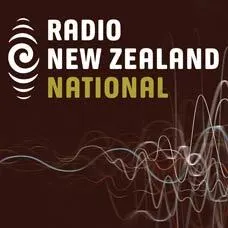The COVID-19 Pandemic
A DigitalNZ Story by National Library Services to Schools
The COVID-19 Pandemic is a world-wide viral pandemic that initiated a global crisis response in 2020 and will have repercussions for years to come.
Rimu Park COVID-19 closure
Palmerston North City Library
BACKGROUND
The COVID-19 Pandemic is a world-wide viral pandemic that initiated a global crisis response in 2020, and that will have repercussions for years to come.
For up-to-date reliable information on COVID-19, particularly relating to Aotearoa New Zealand, please visit the following websites:
- COVID-19 (novel coronavirus) — provides the latest updates, information and advice on COVID-19 from the Ministry of Health
- Unite against COVID-19— what you need to know about COVID-19 to stay safe, produced by the New Zealand Government.
Countdown Supermarket during the COVID-19 Pandemic
Palmerston North City Library
CONTENTS
This story on the COVID-19 Pandemic covers the following:
- What is COVID-19?
- The different strains of COVID-19
- How is COVID-19 spread?
- Symptoms of COVID-19
- What has New Zealand done?
- Vaccination
- Quick Facts
- Supporting resources.
COVID-19 Sign in The Plaza
Palmerston North City Library
WHAT IS COVID-19?
COVID-19 is an infectious disease spread by a virus called coronavirus. It was first recorded in Wuhan, China in late 2019 then spread rapidly around the world. The name, COVID-19 is short for coronavirus disease 2019. Its official title is the, “severe acute respiratory syndrome coronavirus 2”, or SARS-CoV-2.
On 11 March 2020, the World Health Organisation announced that the COVID-19 outbreak was officially a pandemic. A pandemic is where an outbreak of disease spreads across many countries or continents.
Millions of people worldwide have now caught COVID-19. Because COVID-19 is a new virus vaccines needed to be developed. Through an international effort, development of vaccines happened in record time.
A vaccine is now available in many countries around the world, and approximately 40% of the population of Aotearoa New Zealand has had at least one of the two required injections as at August 2021.
Courier Delivery During COVID-19 Pandemic
Palmerston North City Library
THE DIFFERENT STRAINS OF COVID-19
Like all viruses, there are different strains, or variants, of COVID-19 which have been identified. Viruses are able to mutate, or change, the way they behave. This has created further challenges in the ongoing fight against the pandemic.
In their article What are the Delta, Gamma, Beta and Alpha Covid variants?, the BBC looks at the strains and how they are behaving around the world.
HOW IS COVID-19 SPREAD?
Like the flu, COVID-19 can spread from person to person. This can happen when an infected person sneezes, coughs or even talks to another uninfected person. When this happens very small droplets containing the virus can land on surfaces. If another person touches those surfaces then touches their eyes, mouth or nose they can get infected.This is why professional health advice tells you to cough into your elbow, wash your hands thoroughly and frequently, use sanitiser and keep your distance from other people to 2 metres - outside the range of the droplets.
Countdown Supermarket during the COVID-19 Pandemic
Palmerston North City Library
SYMPTOMS OF COVID-19
Three major symptoms of COVID-19 are:
- a persistent dry cough
- a fever
- an overall feeling of tiredness.
Other symptoms may include a runny nose and sore throat. Many people (around 80%) who catch COVID-19 recover after rest and painkillers. However, the disease can kill. It is especially deadly for elderly people and those with a weakened immune system because the body has to fight harder against the COVID-19 virus.
For many of these people, the disease can cause inflammation in the lungs which stops the body getting enough oxygen to survive. This is why very sick COVID-19 hospital patients are put on ventilators – machines designed to help critically-ill patients to breath.
COVID-19 Closure Sign
Palmerston North City Library
Covid-19: Māori welcome government support
Radio New Zealand
Covid-19 fallout on agricultural sector
Radio New Zealand
Quick Facts
- Coronaviruses are viruses found in animals. Some are known to infect humans who then spread it from person to person.
- The COVID-19 outbreak has been officially declared a pandemic by the World Health Organisation (WHO). Only the WHO can decide if a disease is a pandemic.
- A pandemic is the sudden geographic spread of a disease across the world that affects millions of people like the 1918 Influenza outbreak.
- An epidemic is the sudden outbreak of a disease in a localised area like a city region or country like the 2019 outbreak of measles in New Zealand and Samoa.
- Coronaviruses are named after their appearance. They have pointed club-shaped projections that resemble a crown or corona.
- The loss of the sense of smell (anosmia) has been reported as a symptom of COVID-19 infection.
COVID-19 Posters on King Street
Palmerston North City Library
Bear Hunt - COVID-19 Pandemic
Palmerston North City Library
Bear Hunt - COVID-19 Pandemic
Palmerston North City Library
WHAT HAS NEW ZEALAND DONE?
The New Zealand Government chose to go hard and go early to protect New Zealanders against COVID-19. To do this the Government set up a 4 level alert system. These alert levels tell the public what is required to stay healthy and safe. For example, some of the features of alert Level 4 are;
- people are instructed to stay at home and not physically socialise outside their ‘bubble’
- schools are closed
- businesses and shops are closed except for essential services like supermarkets and chemists
- people can only exercise in their local area or neighbourhood
- non-essential travel is banned or severely limited
- mass social gatherings (like music festivals) are cancelled.
COVID-19 Sign in The Plaza
Palmerston North City Library
VACCINATION
Vaccines to help people keep safe from COVID-19 are available.
For information about how vaccines work and are developed, the different types of vaccine available for COVID-19, safety, and how they are developed, follow this link to The World Health Organisation, Vaccines Explained webpage.
The United Nations (UN) has initiated a program called COVAX in an attempt to ensure vaccines are distributed to countries equitably. For further information see COVID-19 vaccine equality, ‘most pressing issue of our times’ – UN chief.
Covax: How will Covid vaccines be shared around the world?
Radio New Zealand
Pasifika church leaders battle Covid-19 vaccine misinformation
Radio New Zealand
Covid-19 Response Minister with latest on vaccinations
Radio New Zealand
QUICK FACTS
- Coronaviruses are viruses found in animals. Some are known to infect humans who then spread it from person to person.
- The COVID-19 outbreak has been officially declared a pandemic by the World Health Organisation (WHO). Only the WHO can decide if a disease is a pandemic.
- A pandemic is the sudden geographic spread of a disease across the world that affects millions of people like the 1918 Influenza outbreak.
- An epidemic is the sudden outbreak of a disease in a localised area like a city region or country like the 2019 outbreak of measles in New Zealand and Samoa.
- Coronaviruses are named after their appearance. They have pointed club-shaped projections that resemble a crown or corona.
- The loss of the sense of smell (anosmia) has been reported as a symptom of COVID-19 infection.
SUPPORITNG RESOURCES
Animated graphic: Coronavirus infections day by day — this chart shows the spread of the virus as monitored by Johns Hopkins University and the WHO.
An interactive visualization — a project to explore the daily global growth of COVID-19. Updated daily.
Coronavirus — a video explaining what Coronavirus (COVID-19) is and what you should do.
Covid-19 (novel coronavirus) — what you need to know.
Covid-19— about the Delta variant.
Covid-19 and climate change — an unforeseen pairing of catastrophes will inform how Generation Z navigates the world.
Covid-19 (novel coronavirus) — questions and answers.
Covid-19 pandemic timeline — how the coronavirus started, spread and stalled life in New Zealand.
Epidemics, pandemics, and outbreaks — what’s the difference between a pandemic, an epidemic, and an outbreak?
Free eBooks — a collection of in multiple languages for children about the Coronavirus / COVID-19.
How to model a pandemic — there is a successful field of science working to unpick the mysteries of infectious disease.
Modelling an influenza pandemic — a guide for the perplexed.
New Zealand — coverage of Coronavirus including the political response and the effect on our health system, the economy and our communities.
New Zealand's Covid success — how New Zealand became a laboratory for the world.
Selected global causes of deaths — a real-time graph showing the global rise of Covid-19.
Pandemic timeline — the economy is in turmoil, scared Kiwis are stockpiling and travel is banned. How did we get here?
Vaccine — when will a coronavirus vaccine be ready?
Vaccines — how do they work? Who needs them? Are there any risks?
Viruses and the immune system — viruses have very simple structures yet they can be very deadly.
This story was curated and compiled by Te Puna Mātauranga o Aotearoa | National Library of New Zealand, Services to Schools staff, April 2020 and updated in August 2021.











